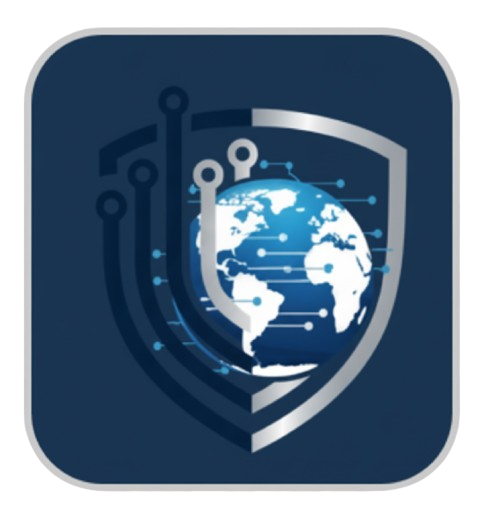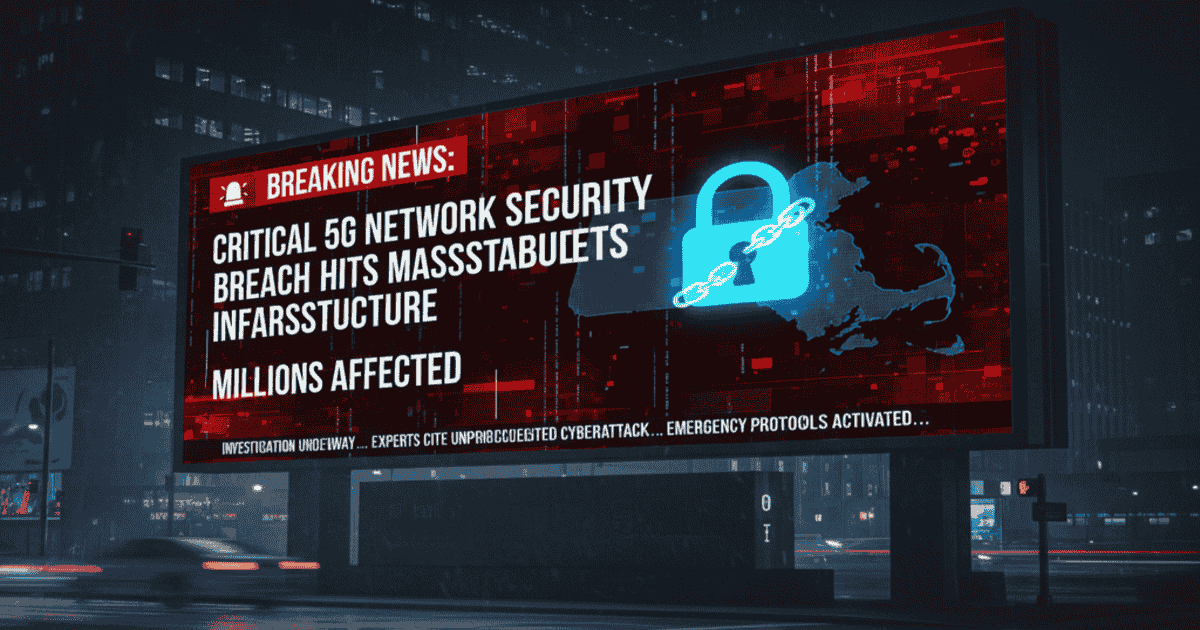IMPORTANT NOTICE
This comprehensive guide provides cybersecurity best practices and analysis based on industry threat intelligence and 5G network security trends. Statistics and specific scenarios referenced are based on industry reports and threat intelligence. For the most current information, visit CISA Cybersecurity Advisories and FBI IC3.
Last Updated: November 5, 2025
5G network technology provides significant benefits for organizations but also introduces new cybersecurity challenges. As Massachusetts organizations adopt 5G networks for connectivity, IoT devices, and critical infrastructure, understanding and implementing proper security measures becomes essential.
This comprehensive guide provides Massachusetts organizations with actionable cybersecurity strategies to protect 5G network infrastructure and connected devices, based on threat intelligence reports, federal guidance, and industry best practices.
TABLE OF CONTENTS
- Understanding 5G Network Security
- Common 5G Security Threats
- Comprehensive Protection Strategies
- IoT Device Security
- Incident Response and Reporting
- Resources and Support
- Conclusion and Next Steps
UNDERSTANDING 5G NETWORK SECURITY
5G networks offer increased bandwidth, lower latency, and support for more connected devices. However, these capabilities also create new attack surfaces and security challenges that organizations must address.
5G Network Architecture
5G networks use a different architecture than previous generations:
- Network Slicing: Virtualized network segments for different services
- Edge Computing: Processing data closer to end users
- Software-Defined Networking: Network management through software
- Cloud-Native Architecture: Cloud-based network functions
Threat Intelligence Overview
According to threat intelligence reports and federal law enforcement analysis, 5G networks face various cybersecurity threats. Federal agencies including the FBI and CISA have issued guidance on 5G network security.
Sources: CISA Cybersecurity Advisories | FBI IC3 Reports | NIST Publications
COMMON 5G SECURITY THREATS
5G networks face various cybersecurity threats that require comprehensive protection strategies.
1. Network Infrastructure Attacks
Attacks targeting 5G network infrastructure:
- Targeting of network core components
- Exploitation of network slicing vulnerabilities
- Attacks on edge computing infrastructure
- Compromise of network management systems
2. IoT Device Compromise
5G networks support many IoT devices that can be compromised:
- Default credentials on IoT devices
- Unpatched IoT device vulnerabilities
- Insecure IoT device communications
- Compromised IoT devices used for attacks
3. Supply Chain Attacks
Attacks through compromised network equipment or software:
- Compromised network equipment from vendors
- Malicious software in network components
- Third-party service provider breaches
- Compromised network management software
4. Authentication and Authorization Attacks
Attacks targeting 5G authentication mechanisms:
- SIM card swapping attacks
- Authentication bypass vulnerabilities
- Weak authentication mechanisms
- Compromised authentication credentials
Source: CISA Cyber Threats and Advisories
COMPREHENSIVE PROTECTION STRATEGIES
Implementing comprehensive cybersecurity measures is essential for protecting 5G networks. The following strategies are based on CISA guidelines, NIST Cybersecurity Framework, and industry best practices.
IMMEDIATE PROTECTION MEASURES (Implement This Week)
1. Network Segmentation
- Segment 5G networks from corporate IT networks
- Implement network segmentation for different services
- Use firewalls between network segments
- Monitor network traffic between segments
2. Access Control
- Implement strong authentication for network access
- Enable multi-factor authentication where possible
- Review and remove unnecessary access privileges
- Implement principle of least privilege
3. Device Management
- Inventory all 5G-connected devices
- Change default credentials on all devices
- Disable unnecessary services and ports
- Regular firmware updates and patches
4. Network Monitoring
- Deploy network monitoring for 5G networks
- Implement anomaly detection for unusual behavior
- Monitor for unauthorized access attempts
- Establish security operations procedures
MEDIUM-TERM IMPROVEMENTS (Next 30 Days)
1. Security Architecture
- Network Security: Implement comprehensive network security controls
- Encryption: Encrypt data in transit and at rest
- Identity Management: Implement identity and access management
- Security Monitoring: Deploy comprehensive security monitoring
2. Device Security
- Device Management: Implement centralized device management
- Patch Management: Regular security updates for all devices
- Device Authentication: Strong authentication for all devices
- Device Monitoring: Monitor device behavior and activity
3. Vendor Security
- Vendor Assessment: Evaluate security posture of vendors
- Contract Requirements: Include security requirements in contracts
- Ongoing Monitoring: Continuously monitor vendor security
- Incident Response: Coordinate with vendors on incident response
IoT DEVICE SECURITY
5G networks support many IoT devices that require specific security measures.
IoT Security Best Practices
- Device Inventory: Maintain inventory of all IoT devices
- Default Credentials: Change all default passwords immediately
- Network Isolation: Isolate IoT devices on separate network segments
- Regular Updates: Keep IoT device firmware updated
- Monitoring: Monitor IoT device behavior for anomalies
INCIDENT RESPONSE AND REPORTING
Having a comprehensive incident response plan is critical for 5G network security incidents. The following protocols are based on CISA guidance and industry best practices.
IMMEDIATE RESPONSE STEPS (First 24 Hours)
Step 1: Detection and Assessment
- Identify the nature and scope of the security incident
- Assess the potential impact on operations
- Activate incident response team and procedures
- Document all evidence and maintain chain of custody
Step 2: Containment
- Isolate affected systems from the network
- Prevent further spread of the attack
- Preserve evidence for forensic analysis
- Implement temporary operational workarounds
Step 3: Notification
- Notify internal leadership and board members
- Contact law enforcement (FBI: 1-800-CALL-FBI)
- Notify CISA (central@cisa.dhs.gov or 1-888-282-0870)
- Notify Massachusetts Attorney General if required
REPORTING REQUIREMENTS
Organizations must comply with multiple reporting requirements:
- FBI IC3: Report cyber crimes to FBI Internet Crime Complaint Center
- CISA: Report cybersecurity incidents to CISA within 72 hours
- Massachusetts Attorney General: Data breaches affecting Massachusetts residents must be reported within 72 hours
RESOURCES AND SUPPORT
Massachusetts organizations can access various resources for protecting 5G networks.
GOVERNMENT RESOURCES
Federal Agencies:
- CISA 24/7 Operations Center: 1-888-282-0870
- CISA Cybersecurity Advisories: Cybersecurity Advisories
- FBI IC3: www.ic3.gov
- NIST Cybersecurity Framework: Framework for Improving Critical Infrastructure Cybersecurity
Massachusetts State Agencies:
- Massachusetts Attorney General: Data Breach Reporting
- Massachusetts Emergency Management Agency (MEMA): (617) 727-2200
EDUCATIONAL RESOURCES
- CISA Resources: Cybersecurity Resources and Tools
- NIST Cybersecurity Framework: Framework for Improving Critical Infrastructure Cybersecurity
- FBI IC3: Internet Crime Complaint Center
CONCLUSION: PROTECTING 5G NETWORKS IN MASSACHUSETTS
Protecting 5G networks requires comprehensive security measures, ongoing vigilance, and coordination with federal law enforcement agencies. By implementing the strategies outlined in this guide, Massachusetts organizations can significantly reduce their cybersecurity risk.
KEY TAKEAWAYS
- Network Segmentation: Isolate 5G networks from corporate IT networks
- Device Management: Maintain inventory and secure all connected devices
- Access Control: Implement strong authentication and access controls
- Monitoring: Deploy comprehensive network and device monitoring
- Regular Updates: Keep all network components and devices updated
- Incident Response: Develop and test incident response procedures
RELATED ARTICLES
- Complete Guide to Cybersecurity Threats in Massachusetts
- Massachusetts Critical Infrastructure Cybersecurity Guide
- Massachusetts Healthcare Cybersecurity: Lessons from Ransomware Attacks
Updated on November 5, 2025 by CyberUpdates365 Team
This guide provides general cybersecurity information and does not constitute legal or technical advice. Consult with qualified cybersecurity professionals and legal counsel for guidance specific to your organization. For the most current threat intelligence, visit CISA Cybersecurity Advisories and FBI IC3.

